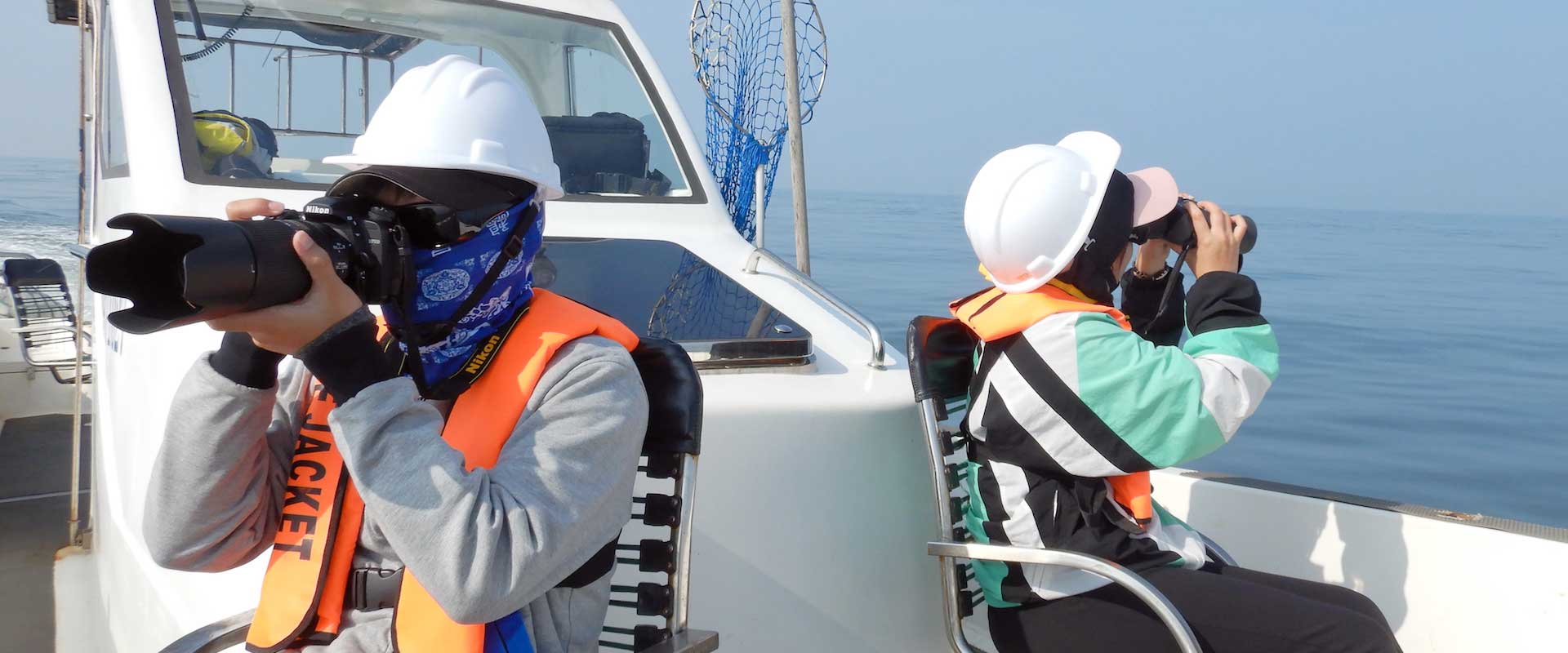White Dolphin Conservation Result
During the development of “Offshore Wind Farm Yunlin Construction Project” (hereinafter referred to as “OWF Yunlin Project”), Yunneng Wind Power Co. Ltd. (hereinafter referred to as “Yunneng”) has been paying much attention to the potential temporary impact of development activities on cetaceans during construction. Yunneng has performed an impact assessment on marine cetaceans (including Taiwanese white dolphins) in the environmental impact assessment (EIA), formulated relevant protective measures based on the assessment results, and promised to perform monitoring and investigation of marine cetaceans before, during and after the construction. All EIA-related documents approved by the Environmental Protection Administration (EPA) are published on the EPA’s official website
To mitigate the potential temporary impact of construction activities on marine cetaceans, “OWF Yunlin Project” will conduct relevant protective measures, including:
- performing piling operation for only 1 wind turbine at a time to avoid large-scale construction works;
- utilizing noise reduction measures throughout the whole piling process to ensure that the underwater noise at a distance of 750 m from the piling location will not exceed 160 dB (SEL);
- deploying cetacean observers (Taiwan Cetacean Observers, TCOs) and setting up passive acoustic monitoring (PAM) systems during the piling operation to prevent marine mammals from entering the construction zone at all times; and
- utilizing soft-start to allow sufficient time for marine mammals to leave areas affected by construction.
Taiwanese white dolphins’ preferable habitat is inshore waters up to 20 meters deep. Based on this habit and past white dolphin sighting data in Taiwan, Council of Agriculture, Executive Yuan made a preliminary announcement to designate the “Category and Area of Major Wildlife Habitat of Indo-Pacific Humpback Dolphins” (hereinafter referred to as the “major habitat area of white dolphins”) in April 2014.
The shortest distance between the wind farm area of the “OWF Yunlin Project” and the major habitat area of white dolphins is over 3,000 meters. From March 2016 to May 2020, the project had conducted 66 surveys on marine mammals in the wind farm, with a total of nearly 300 hours of survey time and a total of nearly 4,500 kilometers of transects in the wind farm. In these surveys, marine mammals such as Neophocaena phocaenoides (finless porpoise) and Tursiops truncatus had been recorded, but there had been no sightings of Taiwanese white dolphins in the wind farm area, which doesn’t belong to the habitat of Taiwanese white dolphins. Sighting records of Taiwanese white dolphins integrated from relevant literature and the survey results of the “OWF Yunlin Project” are shown in the picture. Yunneng’s “OWF Yunlin Project” will continue to conduct monitoring. All environmental monitoring reports have been submitted to the EPA for reference, and summary environmental monitoring reports are published on Yunneng’s website.

The EPA, based on its duties as the competent authority for environmental protection, has conducted 4 on-site inspections and 1 project supervision meeting according to Article 19 of the Environmental Impact Assessment Act since March 2019. The “OWF Yunlin Project” has been truly implementing its EIA commitments and has no record of corrections or penalties imposed by the competent authority for environmental protection.
Furthermore, Yunneng has submitted the “TCO Monitoring Plan for Transportation and Installation of (Monopile) Foundations of OWF Yunlin” according to the “Operations Manual for Taiwan Cetacean Observer System” promulgated by the Ocean Affairs Council (OAC), and the Ocean Conservation Administration, OAC accepted the submitted TCO Monitoring Plan for reference on June 8, 2020. Yunneng will implement the aforementioned protective measures during the piling construction to ensure that the construction activities will not cause a significant impact on marine mammals in Yunlin County’s sea area.
Yunneng, as a company that cherishes the environment and promotes the sustainable development, will continue to work together with relevant environmental protection groups (NGOs) and government agencies to contribute to the ecological conservation of marine mammals (especially Taiwanese white dolphins) and create a win-win situation for ecological sustainability and green energy development.


